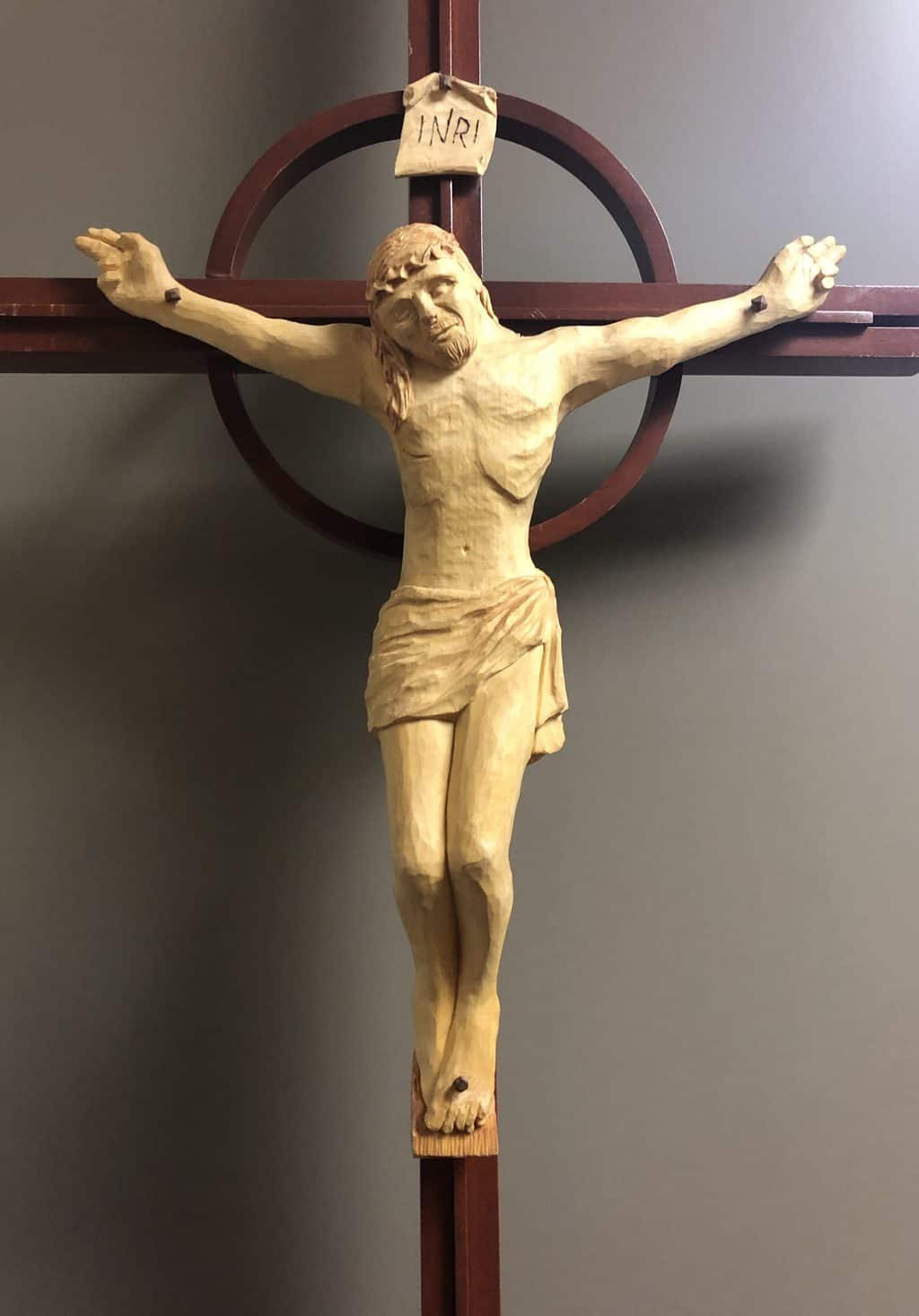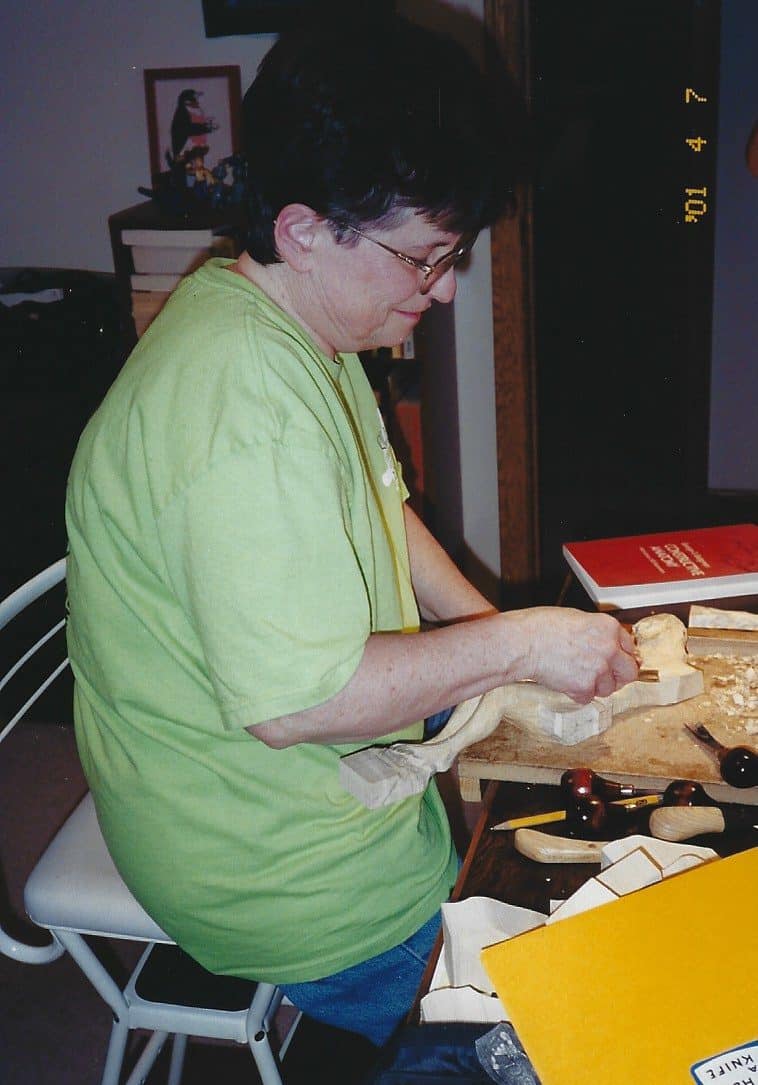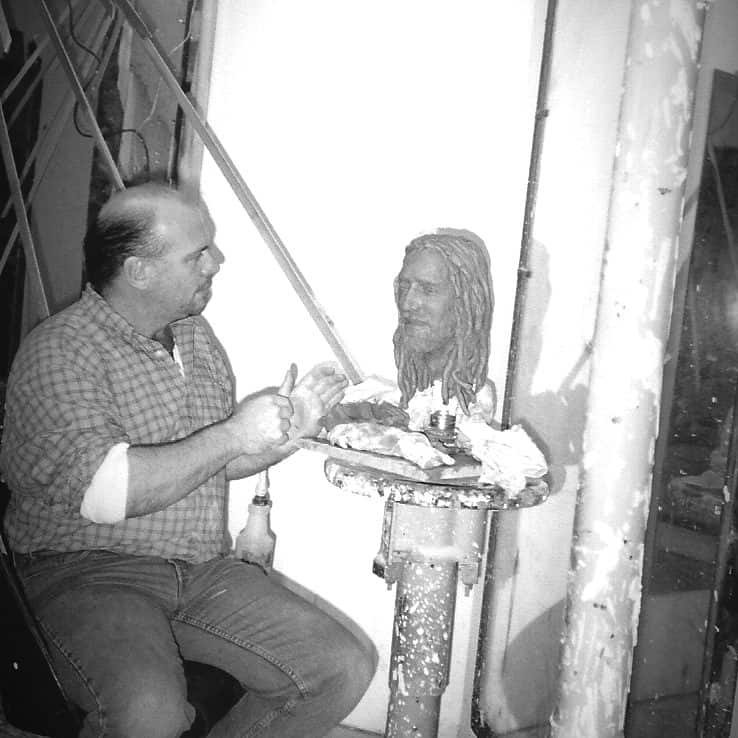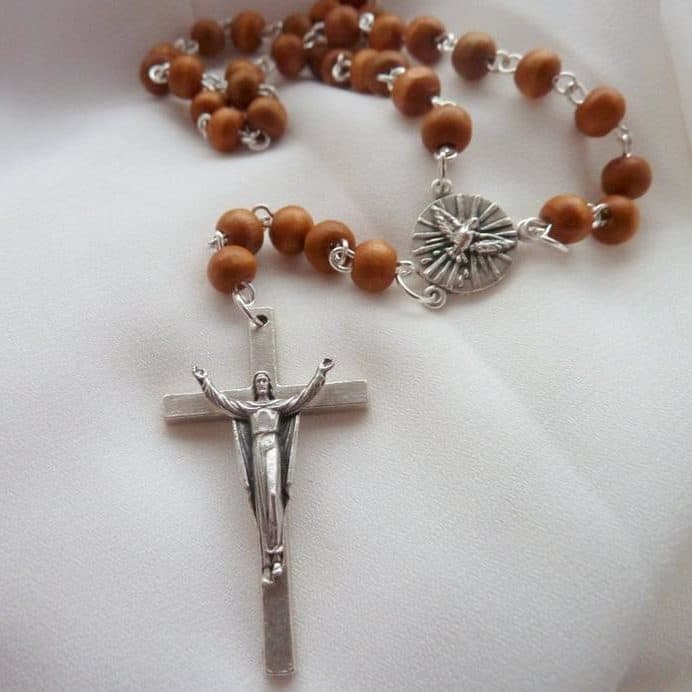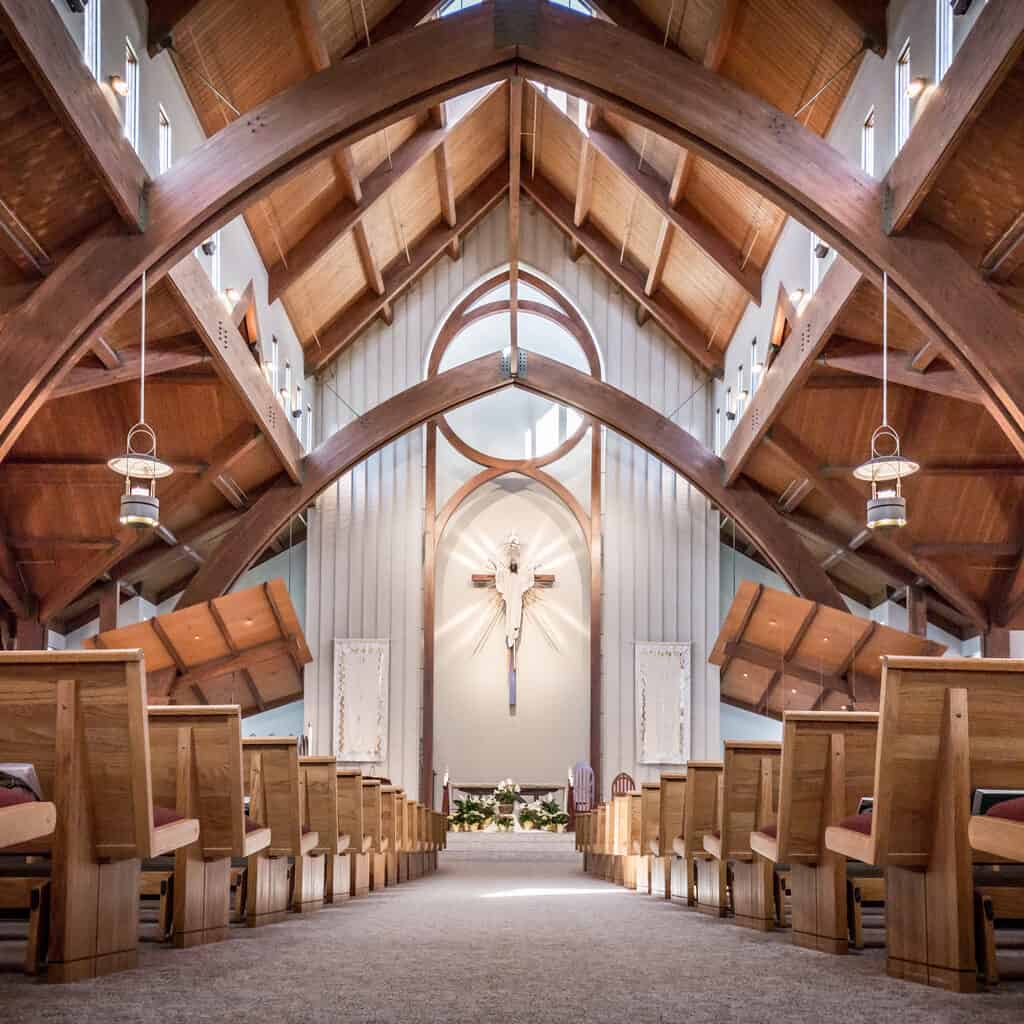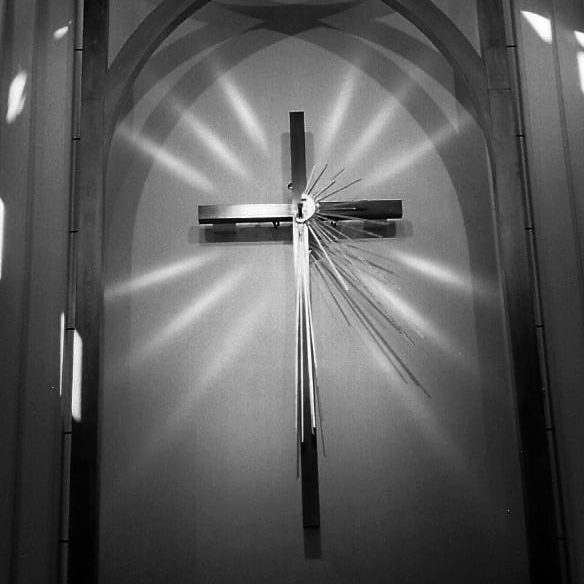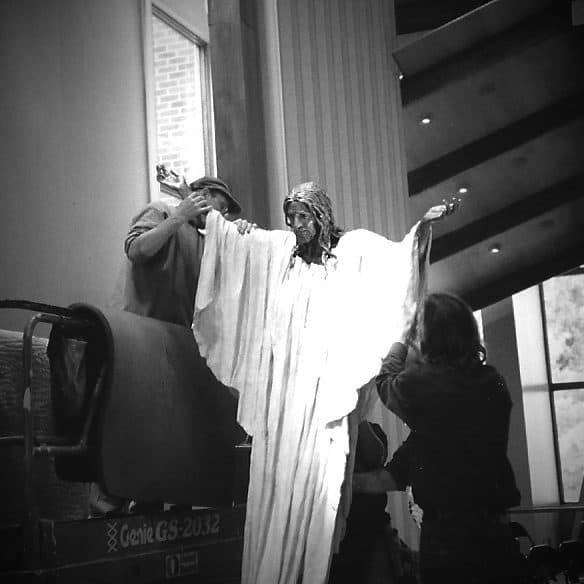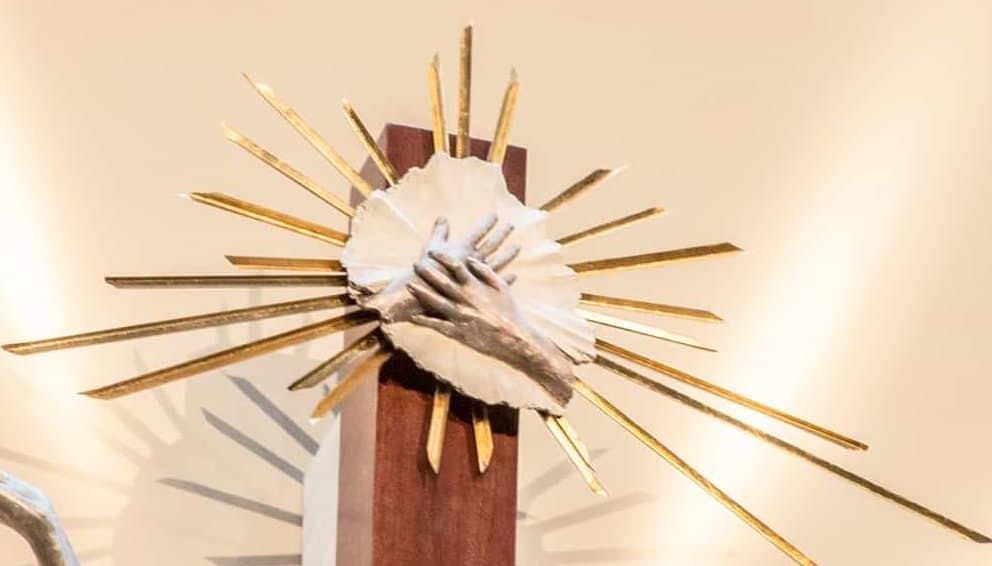Faith goes beyond belief.
I see Christ in everything. Look at our beautiful world!
John Lajba, Sculptor of “The Risen Jesus”
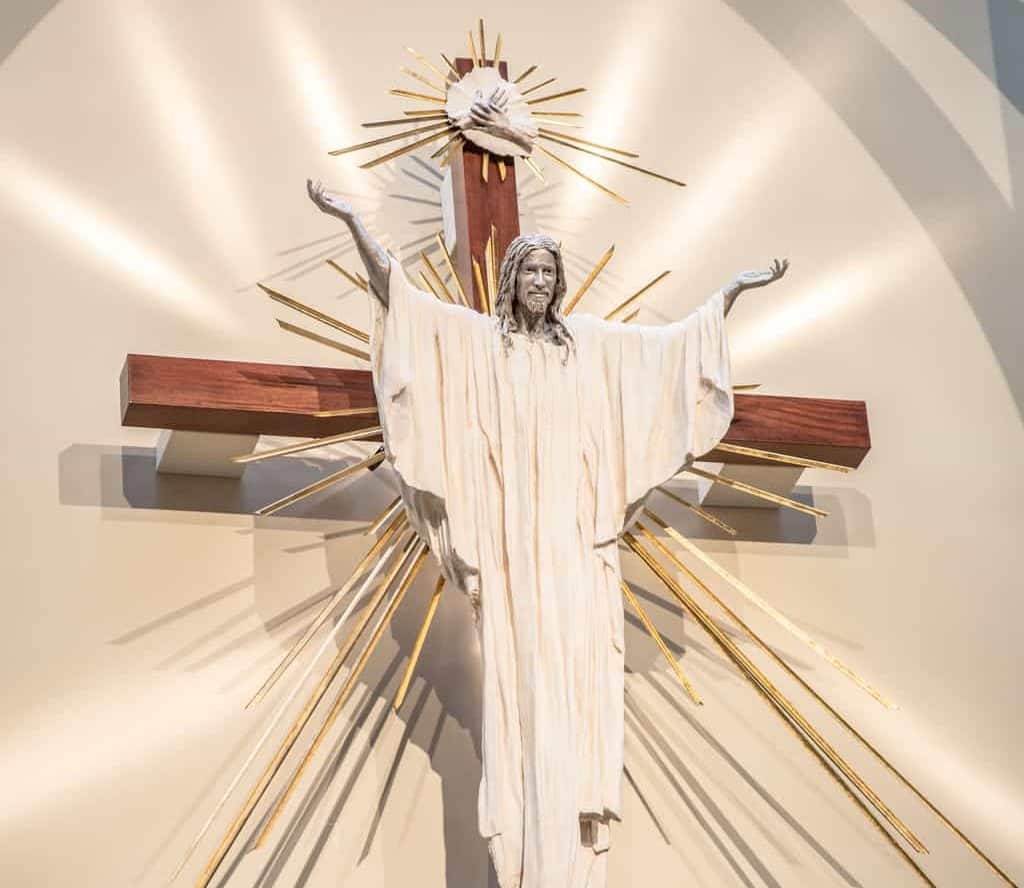
John Lajba
John Lajba might be best known for his bronze figures at Omaha’s TD Ameritrade Park, “Road to Omaha,” but it is his religious work that resonates most with him. His work is found in dozens of parishes through Omaha and surrounding towns, but the St Patrick community’s favorite sculpture is honored in our sanctuary and is the focus of each of our worship services – “The Risen Jesus.”
John has said, “When I do a sculpture of Jesus, I always start with the face. He doesn’t have to look a certain way. It’s about His love for us. I want there to be the perception that He has given His life for us, and I want him to be there for us… There is joy when I scuplt Jesus.”
The Story of the Risen Jesus
When the new curch was being planned and built in the early 2000s there were various new artifacts and installments that needed to be sourced and blessed. Replacing the historic crucifix was one of them. The story of the St. Patrick Risen Jesus began with Jeanne Krajicek’s rosary.
A group of women have always gathered for Friday faith sharing and praying the rosary. Many of them loved and commented on the beautiful rosary which Jeanne brought each week. This led the group to suggest the idea of commissioning a similar Risen Jesus for the new sanctuary.
The decision to stray from tradition on the sanctuary crucifix required approval. The committee quickly reached out to Father Gutsell at the cathedral at the time. Father Gutsell recommended the parish contact the Papal Nuncio in Washington DC. The General Instructions on the Roman Missal was approved by the United States Conference of Catholic Bishops on November 12, 2002. It provided updated instructions for the representation of various items in churches in the United States. As such, it required the more traditional crucifix to be used. Nonetheless, St Patrick was granted the approval to move forward with the Risen Jesus on our cross. It was the last such cross approved in the United States.
With the approval of the cross, selecting the artist and developing the idea was next. The committee scouted for an artist. John Lajba was approached as he had done a Risen Jesus for St. Gerald Parish in Omaha. John was excited to take on the project.
The committee and John worked together to develop the idea of the sculpture to celebrate the gift of God’s resurrection through the cross. They wanted to convey the importance of the cross and that we all have everlasting life due to His resurrection.
The golden rays that emanate from the cross are patterned after the monstrance and represent God’s presence in Jesus and our Church.
Creating the face, body, and garments required specific design and intention. John always starts with the face. He collaborated with the architect as to what best color to use to go along with the design of the church. They chose the silver tone for the skin – almost a platinum. Jesus’ arms are outstretched, as if to welcome all believers to join Him in eternal life. Finally, the folds of the garment were very important. John wanted to ensure he captured the feeling of ascension. The cross not only represents the resurrection from dead but also Jesus’ ascension into Heaven.
To complete the presence of the entire trinity, the Holy Spirit needed to be added to the sculpture.
John talked to several priests about the Holy Spirit to gather ideas for different ways to represent it. He wanted to find a unique way to incorporate the Holy Spirit, and decided to do so with hands pressing onto a heart. This can be seen above Jesus’ head on the cross.
John wanted to depict how the Holy Spirit reaches into us and fills us with grace and peace. It also could be described as a reminder that “Jesus will always love us and hold us dear to His heart.”
“While working on the Sculpture of the Holy Trinity, I was once again immersed in the knowledge of God’s love for us. Hopefully, this sculpture will express the beauty that comes from our Glorious God and the wonder and truth of our Catholic heritage.”
John Labja
Processional Cross
Corpus of Christ
Diane Ostdiek is another talented parishioner to offer her talents to the church. She carved the wooden corpus of the crucified Jesus for the new processional cross first used after the opening of the new church.
